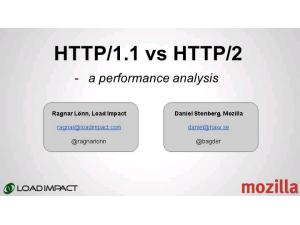- 本月热门
-
 DesignInTec:科技里的设计(当设计师参与创业) by 前田约翰
DesignInTec:科技里的设计(当设计师参与创业) by 前田约翰 -
 Go语言内存、垃圾回收、协程简介(1.4 runtime 运行环境) by 雨痕
Go语言内存、垃圾回收、协程简介(1.4 runtime 运行环境) by 雨痕 -
 AngularJS the performance parts(AngularJS性能:过去现在和未来) by toddmotto
AngularJS the performance parts(AngularJS性能:过去现在和未来) by toddmotto -
 HTTP1.1 vs HTTP2 a performance analysis(HTTP2比HTTP1性能提高66%) by mozilla
HTTP1.1 vs HTTP2 a performance analysis(HTTP2比HTTP1性能提高66%) by mozilla -
 How to build a content and social media engine[如何构建内容和社交媒体营销引擎] by by Marcel Santilli
How to build a content and social media engine[如何构建内容和社交媒体营销引擎] by by Marcel Santilli -
 9 Thought-Provoking Quotes About Work-Life Balance(9个发人深省的关于工作生活平衡的名言) by SalesForce
9 Thought-Provoking Quotes About Work-Life Balance(9个发人深省的关于工作生活平衡的名言) by SalesForce -
 How To Shot Web(如何攻破网站) by Jason Haddix
How To Shot Web(如何攻破网站) by Jason Haddix -
 MongoDB and the Internet of Things(MongoDB和物联网) by Chris Biow
MongoDB and the Internet of Things(MongoDB和物联网) by Chris Biow -
 设计模式之MVC(基于WEB、JSP) by Hesey
设计模式之MVC(基于WEB、JSP) by Hesey -
 高性能Web应用缓存架构设计浅谈 by Robbin Fan
高性能Web应用缓存架构设计浅谈 by Robbin Fan
加收藏
Securing Web Apps with NGINX(使用nginx保护你的web应用) by Stephan Ilyin
第1页
Securing Web Apps with NGINX
http://wallarm.com Stephan Ilyin, si@wallarm.com
http://wallarm.com Stephan Ilyin, si@wallarm.com
第2页
How many of you have your websites hacked?
第3页
Each application probably has vulnerabilities
第4页
… and someday it can be hacked
第5页
How to harder/secure your application?
第6页
How deal with attacks to your application?
Chapter 1.
Chapter 1.
第7页
Tip #1. mod_security can be a good choice
第8页
Mod_security rocks!
• Open-source. Finally available for NGINX • It works! It can be quite efficient in detecting
attacks • Supports virtual patching • It is incredible customisable
• Open-source. Finally available for NGINX • It works! It can be quite efficient in detecting
attacks • Supports virtual patching • It is incredible customisable
第9页
server { listen server_name
80; localhost;
location / { ModSecurityEnabled on; ModSecurityConfig modsecurity.conf; ModSecurityPass @backend;
}
location @backend { proxy_pass http://localhost:8011; proxy_read_timeout 180s;
} }
80; localhost;
location / { ModSecurityEnabled on; ModSecurityConfig modsecurity.conf; ModSecurityPass @backend;
}
location @backend { proxy_pass http://localhost:8011; proxy_read_timeout 180s;
} }
第10页
but mod_security is not so good!
• Relies on regex
• It is expensive in performance prospective
• If you use default rulesets, you will get a huge number of false-positives
• Rules tuning is a hard job (difficult to maintain)
• Signatures never covers all the attacks
• REGEXs can be bypassed
• Relies on regex
• It is expensive in performance prospective
• If you use default rulesets, you will get a huge number of false-positives
• Rules tuning is a hard job (difficult to maintain)
• Signatures never covers all the attacks
• REGEXs can be bypassed
第11页
What rules look like
# ShellShock virtual patch (Bash attack)
SecRule REQUEST_HEADERS "^\(\s*\)\s+{" "phase:1,deny,id: 1000000,t:urlDecode,status: 400,log,msg:'CVE-2014-6271 - Bash Attack'"
# ShellShock virtual patch (Bash attack)
SecRule REQUEST_HEADERS "^\(\s*\)\s+{" "phase:1,deny,id: 1000000,t:urlDecode,status: 400,log,msg:'CVE-2014-6271 - Bash Attack'"
第12页
Good practice (imho)
• Use public ruleset — for monitoring mode • Craft rules from scratch specifically for your
application — for blocking mode
• Use public ruleset — for monitoring mode • Craft rules from scratch specifically for your
application — for blocking mode
第13页
More rules = More overhead!
第14页
Using phases is good idea
1. Request headers (REQUEST_HEADERS) 2. Request body (REQUEST_BODY) 3. Response headers (RESPONSE_HEADERS) 4. Response body (RESPONSE_BODY) 5. Logging (LOGGING)
1. Request headers (REQUEST_HEADERS) 2. Request body (REQUEST_BODY) 3. Response headers (RESPONSE_HEADERS) 4. Response body (RESPONSE_BODY) 5. Logging (LOGGING)
第15页
SecRule phase 2
SecRule REQUEST_BODY "/+etc/+passwd" "t:none,ctl:ResponseBodyAccess=On,msg:'IN- PASSWD path detected', phase: 2,pass,log,auditlog,id:'10001',t:urlDeco de,t:lowercase,severity:1"
SecRule REQUEST_BODY "/+etc/+passwd" "t:none,ctl:ResponseBodyAccess=On,msg:'IN- PASSWD path detected', phase: 2,pass,log,auditlog,id:'10001',t:urlDeco de,t:lowercase,severity:1"
第16页
SecRule phase 4
SecRule RESPONSE_BODY "root\:x\:0\:0" "id:'20001',ctl:auditLogParts=+E, msg:'OUT- Content of PASSWD detected!',phase: 4,allow,log,auditlog,t:lowercase,severit y:0"
SecRule RESPONSE_BODY "root\:x\:0\:0" "id:'20001',ctl:auditLogParts=+E, msg:'OUT- Content of PASSWD detected!',phase: 4,allow,log,auditlog,t:lowercase,severit y:0"
第17页
Handbook by Ivan Ristic. Must read!
第18页
Tip #2. Give a chance to naxsi (another WAF for
NGINX)
NGINX)
第19页
Why naxsi?
• NAXSI means Nginx Anti Xss & Sql Injection (but do more)
• Naxsi doesn't rely on a signature base (regex)!
https://github.com/nbs-system/naxsi
• NAXSI means Nginx Anti Xss & Sql Injection (but do more)
• Naxsi doesn't rely on a signature base (regex)!
https://github.com/nbs-system/naxsi
第20页
naxsi rules
• Reads a small subset of simple scoring rules (naxsi_core.rules) containing 99% of known patterns involved in websites vulnerabilities.
• For example, '<', '|' or 'drop' are not supposed to be part of a URI.
• Reads a small subset of simple scoring rules (naxsi_core.rules) containing 99% of known patterns involved in websites vulnerabilities.
• For example, '<', '|' or 'drop' are not supposed to be part of a URI.
第21页
This rule triggers on select or other SQL operators
MainRule "rx:select|union|update|delete| insert|table|from|ascii|hex|unhex|drop" "msg:sql keywords" "mz:BODY|URL|ARGS| $HEADERS_VAR:Cookie" "s:$SQL:4" id:1000;
MainRule "rx:select|union|update|delete| insert|table|from|ascii|hex|unhex|drop" "msg:sql keywords" "mz:BODY|URL|ARGS| $HEADERS_VAR:Cookie" "s:$SQL:4" id:1000;
第22页
naxsi setup
http { include /etc/nginx/naxsi_core.rules; include /etc/nginx/mime.types;
[...] }
http { include /etc/nginx/naxsi_core.rules; include /etc/nginx/mime.types;
[...] }
第23页
But! Ruleset is not enough!
• Those patterns may match legitimate queries!
• Therefore, naxsi relies on whitelists to avoid false positives
• Nxutil tool helps the administrator to create the appropriate whitelist
• there are pre-generated whitelists for some CMS (e.g. WordPress)
• Those patterns may match legitimate queries!
• Therefore, naxsi relies on whitelists to avoid false positives
• Nxutil tool helps the administrator to create the appropriate whitelist
• there are pre-generated whitelists for some CMS (e.g. WordPress)
第24页
LearningMode; #Enables learning mode
SecRulesEnabled; #SecRulesDisabled; DeniedUrl "/RequestDenied"; ## check rules CheckRule "$SQL >= 8" BLOCK; CheckRule "$RFI >= 8" BLOCK; CheckRule "$TRAVERSAL >= 4" BLOCK; CheckRule "$EVADE >= 4" BLOCK; CheckRule "$XSS >= 8" BLOCK;
SecRulesEnabled; #SecRulesDisabled; DeniedUrl "/RequestDenied"; ## check rules CheckRule "$SQL >= 8" BLOCK; CheckRule "$RFI >= 8" BLOCK; CheckRule "$TRAVERSAL >= 4" BLOCK; CheckRule "$EVADE >= 4" BLOCK; CheckRule "$XSS >= 8" BLOCK;
第25页
naxsi ruleset
第26页
naxsi whitelist
第27页
Naxsi pros and cons
Pros: • Pretty fast! • Update independent • Resistant to many waf-bypass techniques
Cons: • You need to use LearningMode with each significant code deployment
Pros: • Pretty fast! • Update independent • Resistant to many waf-bypass techniques
Cons: • You need to use LearningMode with each significant code deployment
第28页
Tip #3. Try repsheet (behaviour based security)
第29页
Watch Aaron Bedra’s talk http://getrepsheet.com/
第30页
Tip #4. And there is also Wallarm WAF based on NGINX
第31页
http://wallarm.com
第32页
How deal with DDoS? Chapter 2.
第33页
How to deal with DDoS?
• The traditional technique for self-defense is to read the HTTP server’s log file, write a pattern for grep (to catch bot requests), and ban anyone who falls under it.
• That’s not easy!
• The following are tips on where to place pillows in advance so it won’t hurt so much when you fall.
• The traditional technique for self-defense is to read the HTTP server’s log file, write a pattern for grep (to catch bot requests), and ban anyone who falls under it.
• That’s not easy!
• The following are tips on where to place pillows in advance so it won’t hurt so much when you fall.
第34页
Tip #5. Use test_cookie module
第35页
Use test_cookie module
• Usually HTTP-flooding bots are pretty stupid • Lack HTTP cookie and redirect mechanisms • Testcookie-nginx works as a quick filter between
the bots and the backend during L7 DDoS attacks, allowing you to screen out junk requests
• Usually HTTP-flooding bots are pretty stupid • Lack HTTP cookie and redirect mechanisms • Testcookie-nginx works as a quick filter between
the bots and the backend during L7 DDoS attacks, allowing you to screen out junk requests
第36页
Use test_cookie module
Straightforward checks: • Whether the client can perform HTTP Redirect • Whether it supports JavaScript • Whether it supports Flash
Straightforward checks: • Whether the client can perform HTTP Redirect • Whether it supports JavaScript • Whether it supports Flash
第37页
Use test_cookie module
In addition to its merits, test_cookies also has its drawbacks: • Cuts out all bots (including Googlebot) • Creates problems for users with Links and w3m browsers • Does not protect against bots with full-browser-stack
https://github.com/kyprizel/testcookie-nginx-module
In addition to its merits, test_cookies also has its drawbacks: • Cuts out all bots (including Googlebot) • Creates problems for users with Links and w3m browsers • Does not protect against bots with full-browser-stack
https://github.com/kyprizel/testcookie-nginx-module
第38页
Tip #6. Code 444
第39页
Code 444
• The goal of DDoSers is often the most resourceintensive part of the site.
• A typical example is a search engine. Naturally, it can be exploited by charging tens of thousands of queries
• So what can we do?
• The goal of DDoSers is often the most resourceintensive part of the site.
• A typical example is a search engine. Naturally, it can be exploited by charging tens of thousands of queries
• So what can we do?
第40页
Code 444
• Temporarily disable this search function • Nginx supports custom code 444, which allows you
to simply close the connection and give nothing in response
• Temporarily disable this search function • Nginx supports custom code 444, which allows you
to simply close the connection and give nothing in response
第41页
Code 444
location /search { return 444;
}
location /search { return 444;
}
第42页
Tip #7. Use ipset
第43页
Ban bots’ IPs with ipset
• If you’re sure that location/search requests are coming only from bots
• Ban bots (getting 444) with a simple shell script ipset -N ban iphash
tail -f access.log | while read LINE; do echo “$LINE” | cut -d’”’ -f3 | cut -d’ ‘ -f2 | grep -q 444 && ipset -A ban “${L%% *}”; done
• If you’re sure that location/search requests are coming only from bots
• Ban bots (getting 444) with a simple shell script ipset -N ban iphash
tail -f access.log | while read LINE; do echo “$LINE” | cut -d’”’ -f3 | cut -d’ ‘ -f2 | grep -q 444 && ipset -A ban “${L%% *}”; done
第44页
Tip #8. Banning based on geographic indicators
第45页
Tip #8. Banning based on geographic indicators
• You can strictly limit certain countries that make you feel uneasy
• But. It is a bad practice! GeoIP data isn’t completely accurate!
• You can strictly limit certain countries that make you feel uneasy
• But. It is a bad practice! GeoIP data isn’t completely accurate!
第46页
Tip #8. Banning based on geographic indicators
• Connect to the nginx GeoIP module
• Display the geographic indicator information on the access log
• grep the nginx access log and add clients by geographic indicators to the ban list.
• Connect to the nginx GeoIP module
• Display the geographic indicator information on the access log
• grep the nginx access log and add clients by geographic indicators to the ban list.
第47页
Tip #9. You can use neural network!
第48页
Tip #9. You can use neural network
• Bad request:
0.0.0.0 - - [20/Dec/2011:20:00:08 +0400] "POST /forum/index.php HTTP/1.1" 503 107 "http:// www.mozilla-europe.org/" “-"
• Good request: 0.0.0.0 - - [20/Dec/2011:15:00:03 +0400] "GET /forum/rss.php?topic=347425 HTTP/1.0" 200 1685 "-" "Mozilla/5.0 (Windows; U; Windows NT 5.1; pl; rv:1.9) Gecko/2008052906 Firefox/3.0"
• Bad request:
0.0.0.0 - - [20/Dec/2011:20:00:08 +0400] "POST /forum/index.php HTTP/1.1" 503 107 "http:// www.mozilla-europe.org/" “-"
• Good request: 0.0.0.0 - - [20/Dec/2011:15:00:03 +0400] "GET /forum/rss.php?topic=347425 HTTP/1.0" 200 1685 "-" "Mozilla/5.0 (Windows; U; Windows NT 5.1; pl; rv:1.9) Gecko/2008052906 Firefox/3.0"
第49页
Tip #9. You can use neural network
Use Machine Learning (ML) to detect bots:
• use neural network (e.g. PyBrain)
• stuffed logs inside
• analyse the requests for classification between "bad" and "good" clients under DDoS
A good proof-of-concept: https://github.com/SaveTheRbtz/junk/tree/master/ neural_networks_vs_ddos
Use Machine Learning (ML) to detect bots:
• use neural network (e.g. PyBrain)
• stuffed logs inside
• analyse the requests for classification between "bad" and "good" clients under DDoS
A good proof-of-concept: https://github.com/SaveTheRbtz/junk/tree/master/ neural_networks_vs_ddos
第50页
Tip #9. You can use neural network
• Useful to have the access.log before a DDoS attack, because it lists virtually 100% of your legitimate clients
• It is an excellent dataset for neural network training
• Useful to have the access.log before a DDoS attack, because it lists virtually 100% of your legitimate clients
• It is an excellent dataset for neural network training
第51页
Tip #10. Keep track of the number of requests per second
第52页
Tip #10. Keep track of the number of requests per second
• You can estimate this value with the following shell command
echo $(($(fgrep -c "$(env LC_ALL=C date --date=@$(($(date +%s)-60)) +%d/%b/%Y: %H:%M)" “$ACCESS_LOG”)/60))
• You can estimate this value with the following shell command
echo $(($(fgrep -c "$(env LC_ALL=C date --date=@$(($(date +%s)-60)) +%d/%b/%Y: %H:%M)" “$ACCESS_LOG”)/60))
第53页
Tuning the web server
• Of course, you put nginx on silent and hope that everything will be OK.
• However, things are not always OK. • So the administrator of any server should devote a
lot of time to tweaking and tuning nginx.
• Of course, you put nginx on silent and hope that everything will be OK.
• However, things are not always OK. • So the administrator of any server should devote a
lot of time to tweaking and tuning nginx.
第54页
Tip #11. Limit buffer sizes and
timeouts in NGINX
timeouts in NGINX
第55页
Every resource has a limit
• Every resource has a limit. In particular, this applies to memory.
• the size of the header and all buffers need to be limited to adequate values on the client and on the server as a whole
• Every resource has a limit. In particular, this applies to memory.
• the size of the header and all buffers need to be limited to adequate values on the client and on the server as a whole
第56页
Limit buffers
• client_header_buffer_size • large_client_header_buffers • client_body_buffer_size • client_max_body_size
• client_header_buffer_size • large_client_header_buffers • client_body_buffer_size • client_max_body_size
第57页
And time_outs
• reset_timeout_connection • client_header_timeout • client_body_timeout • keepalive_timeout • send_timeout
• reset_timeout_connection • client_header_timeout • client_body_timeout • keepalive_timeout • send_timeout
第58页
Question: what are the correct parameters for the
buffers and timeouts?
buffers and timeouts?
第59页
• There’s no universal recipe here • But there is a proven approach you can try
第60页
How to limit buffers and timeout?
1. Mathematically arrange the minimum parameter value.
2. Launch site test runs.
3. If the site’s full functionality works without a problem, the parameter is set.
4. If not, increase the parameter value and go to step 2.
1. Mathematically arrange the minimum parameter value.
2. Launch site test runs.
3. If the site’s full functionality works without a problem, the parameter is set.
4. If not, increase the parameter value and go to step 2.
第61页
Tip #12. Limit connections in NGINX (limit_conn and limit_req)
第62页
Ideally you need to test application to see how many requests it can handle
and set that value in the NGINX configuration
and set that value in the NGINX configuration
第63页
http { limit_conn_zone $binary_remote_addr zone=download_c:10m; limit_req_zone $binary_remote_addr zone=search_r:10m
rate=1r/s;
server { location /download/ { limit_conn download_c 1; ..
} location /search/ {
limit_req zone=search_r burst=5; .. }
} }
rate=1r/s;
server { location /download/ { limit_conn download_c 1; ..
} location /search/ {
limit_req zone=search_r burst=5; .. }
} }
第64页
What to limit?
• It makes sense to set limits for limit_conn and limit_req for locations where it’s costly to implement scripts
• You can also fail2ban utility here: http://www.fail2ban.org
• It makes sense to set limits for limit_conn and limit_req for locations where it’s costly to implement scripts
• You can also fail2ban utility here: http://www.fail2ban.org
第65页
Bad practices / How not to configure NGINX
Chapter 3.
Chapter 3.
第66页
Bad practices
• NGINX has secure-enough defaults • Sometimes administrators can make mistakes
cooking it
• NGINX has secure-enough defaults • Sometimes administrators can make mistakes
cooking it
第67页
Tip #13. Be careful with
rewrite with $uri
rewrite with $uri
第68页
rewrite with $uri
• Everyone knows $uri / (“normalized" URI of the request)
• normalization is decoding the text encoded in the '%XX' form, resolving references to the relative path components '.' and '..', and possible compression of two or more adjacent slashes into a single slash
• Everyone knows $uri / (“normalized" URI of the request)
• normalization is decoding the text encoded in the '%XX' form, resolving references to the relative path components '.' and '..', and possible compression of two or more adjacent slashes into a single slash
第69页
rewrite with $uri
Typical HTTP -> HTTPS redirect snippet:
location / { rewrite ^ https://$host/$uri;
} location / {
return 302 https://$host$uri; }
What can go wrong? CRLF (%0d%0a) comes to play
Typical HTTP -> HTTPS redirect snippet:
location / { rewrite ^ https://$host/$uri;
} location / {
return 302 https://$host$uri; }
What can go wrong? CRLF (%0d%0a) comes to play
第70页
rewrite with $uri
• Request
GET /test%0d%0aSet-Cookie:%20malicious%3d1 HTTP/1.0 Host: yourserver.com
• Respond
HTTP/1.1 302 Moved Temporarily Server: nginx Date: Mon, 02 Jun 2014 13:08:09 GMT Content-Type: text/html Content-Length: 154 Connection: close Location: https://yourserver.com/test Set-Cookie: malicious=1
• Request
GET /test%0d%0aSet-Cookie:%20malicious%3d1 HTTP/1.0 Host: yourserver.com
• Respond
HTTP/1.1 302 Moved Temporarily Server: nginx Date: Mon, 02 Jun 2014 13:08:09 GMT Content-Type: text/html Content-Length: 154 Connection: close Location: https://yourserver.com/test Set-Cookie: malicious=1
第71页
Use $request_uri instead of $uri
第72页
Tip #14. Pay attention to try_files
第73页
try_files
• try_files checks the existence of files in the specified order and uses the first found file for request processing
• if none of the files were found, an internal redirect to the URI specified in the last parameter is made
• try_files checks the existence of files in the specified order and uses the first found file for request processing
• if none of the files were found, an internal redirect to the URI specified in the last parameter is made
第74页
try_files
There is a Django project
$ tree /your/django/project/root +-- media +---- some_static.css +-- djangoproject +---- __init__.py +---- settings.py +---- urls.py +---- wsgi.py +-- manage.py
There is a Django project
$ tree /your/django/project/root +-- media +---- some_static.css +-- djangoproject +---- __init__.py +---- settings.py +---- urls.py +---- wsgi.py +-- manage.py
第75页
try_files
Administrators decide to serve static files with nginx and use this configuration
root /your/django/project/root;
location / { try_files $uri @django;
}
location @django { proxy_pass http://django_backend;
}
Administrators decide to serve static files with nginx and use this configuration
root /your/django/project/root;
location / { try_files $uri @django;
}
location @django { proxy_pass http://django_backend;
}
第76页
try_files: what’s wrong?
• NGINX will first try to serve static file from root, and only if it does not exists pass the request to @django location
• Therefore, anyone can access manage.py and all of the project sources (including djangoproject/ settings.py)
• NGINX will first try to serve static file from root, and only if it does not exists pass the request to @django location
• Therefore, anyone can access manage.py and all of the project sources (including djangoproject/ settings.py)
第77页
Tip #15. Use disable_symlinks
if_not_owner
if_not_owner
第78页
Hosters usually do this
location /static/ { root /home/someuser/www_root/static; }
location /static/ { root /home/someuser/www_root/static; }
第79页
What’s the problem?
User can create symlink to any file available to nginx worker (including files of another users)!
[root@server4 www]# ls -alh total 144K drwxr-x--- 6 usertest nobody 4.0K Apr 10 20:09 . drwx--x--x 13 usertest usertest 4.0K Apr 7 02:16 .. -rw-r--r-- 1 usertest usertest 184 Apr 6 21:29 .htaccess lrwxrwxrwx 1 usertest usertest 38 Apr 6 22:48 im1.txt -> /home/ another_user/public_html/config.php -rw-r--r-- 1 usertest usertest 3 May 3 2011 index.html
User can create symlink to any file available to nginx worker (including files of another users)!
[root@server4 www]# ls -alh total 144K drwxr-x--- 6 usertest nobody 4.0K Apr 10 20:09 . drwx--x--x 13 usertest usertest 4.0K Apr 7 02:16 .. -rw-r--r-- 1 usertest usertest 184 Apr 6 21:29 .htaccess lrwxrwxrwx 1 usertest usertest 38 Apr 6 22:48 im1.txt -> /home/ another_user/public_html/config.php -rw-r--r-- 1 usertest usertest 3 May 3 2011 index.html
第80页
What you can do
1. Turn off symlinks (and users will suffer) 2. Use option disable_symlinks if_not_owner
(best choice)
1. Turn off symlinks (and users will suffer) 2. Use option disable_symlinks if_not_owner
(best choice)
第81页
Slides: bit.ly/nginx_secure_webapps
http://wallarm.com Stephan Ilyin, si@wallarm.com
http://wallarm.com Stephan Ilyin, si@wallarm.com
